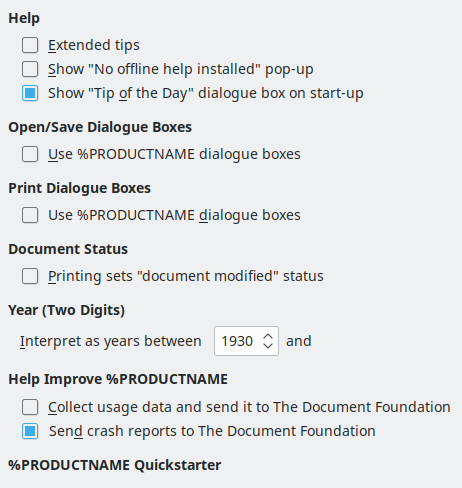General
Specifies the general settings for Office.
To access this command...
Choose Tools - Options - Office - General.

Help
Specifies the behaviour of the installed help.
Extended tips
Displays some short help text when you rest the cursor on an icon, a menu command, or a control in a dialogue box.
Document status
Printing sets "document modified" status
Specifies whether the printing of the document counts as a modification. When this option is marked, the very next time that the document is closed you are asked if the changes should be saved. The print date is then entered in the document properties as a change.
Year (two digits)
Defines a date range, within which the system recognises a two-digit year.
In Office, years are indicated by four digits, so that the difference between 01/01/99 and 01/01/01 is two years. This Year (two digits) setting allows the user to define the years in which two-digit dates are added to 2000. To illustrate, if you specify a date of 01/01/30 or later, the entry "01/01/20" is recognised as 2020-01-01 instead of 1920-01-01.
Help Improve Office
Send crash reports to The Document Foundation
Send crash reports to help developers improve the software’s reliability. Whenever Office crashes, you can opt to send reports containing certain debugging information, useful to help track down the cause of the bug and fix it eventually.
Office Quickstarter
Load Office during system start-up
If enabled, loads Office into memory when the computer is booted, or when Office is restarted. When loaded, it reduces the time for opening Office. An icon is also added to the system tray. Right-click on the icon to show a menu for opening new or existing documents, and for stopping the quickstarter.
Office File Associations
Windows Default Apps
Call Windows file associations management. This button behaves according to Microsoft file association management policy, which is to open "Default apps" on Windows 7, 8, and 8.1; and to show a message telling user how to open that applet manually in Windows 10.